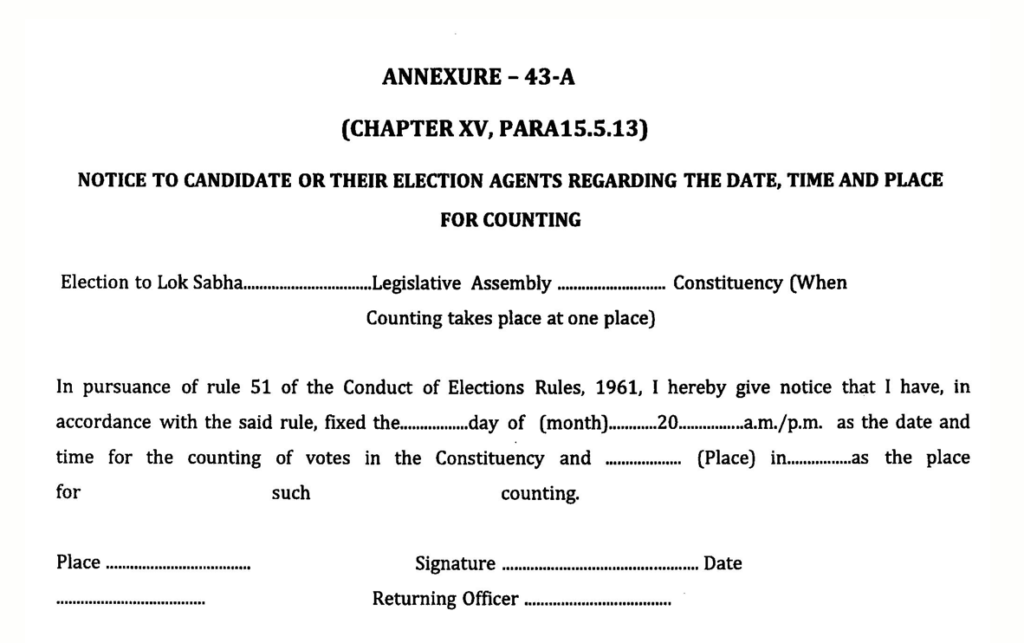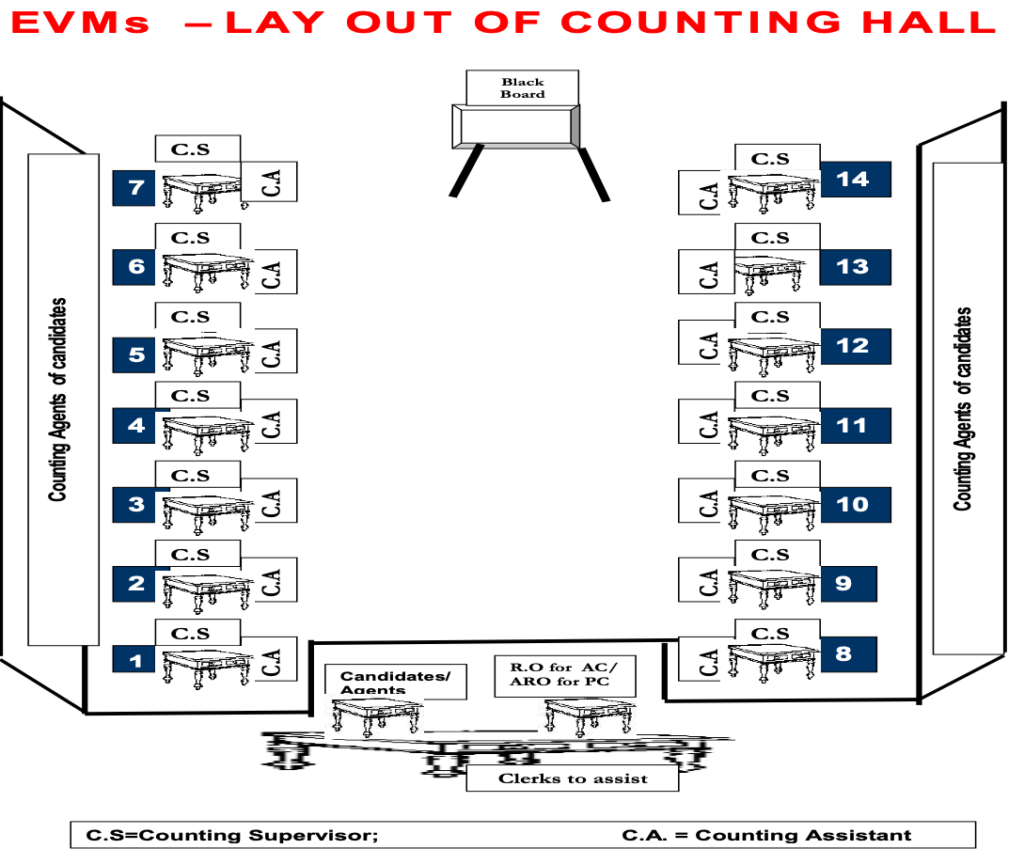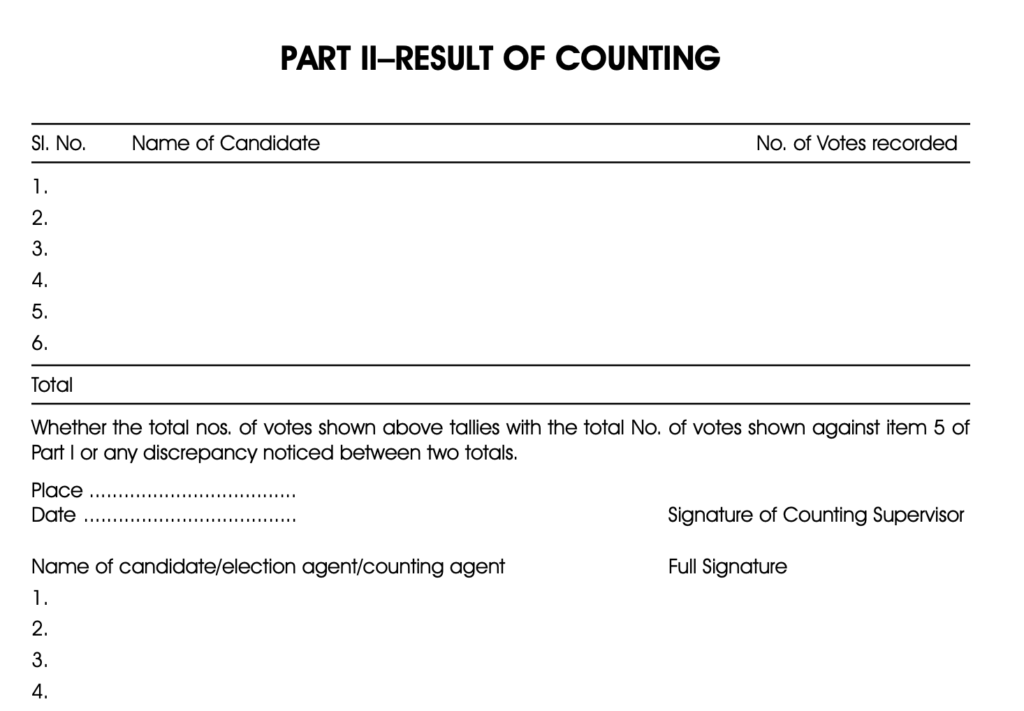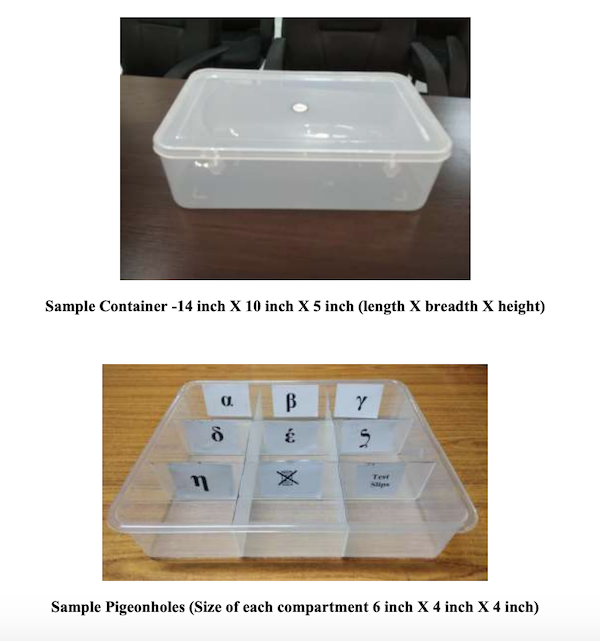The counting of votes for the 17th Lok Sabha elections is just days away. But how does such a mammoth counting exercise take place? Here is a guide.
Preparations for the Counting Day
The Returning Officer (RO) fixes the time & place of counting at least one week before the date of polling. The place is decided in consultation with the police. The selected place should be spacious enough with adequate lighting and other facilities to accommodate the officials and agents. A permanent structure like a college or a university is usually selected for the purpose of counting.

The same is informed to the candidates through a notice. The candidates are expected to appoint counting agents not exceeding 16 agents for any place of counting.
The counting usually starts at 8am on the designated day except in special cases. A district head quarters is usually preferred to be the place of counting. The relevant legal provisions for counting of votes are derived from the Representation of People Act 1951 and The Conduct of Elections Rules 1961.
The Counting Arrangements
Since each Parliamentary constituency is made up of multiple assembly segments, each assembly segment should be counted in a separate hall. The rules laid down by the ECI do not allow the counting of more than one assembly segment in the same hall. In cases where adequate halls are not available, then counting is to be done in sequence i.e. one assembly segment followed by the other and so on.
In case of simultaneous polls to Lok Sabha (LS) and Legislative Assembly (LA), both have to be counted in the same hall. Half of the tables for LS and other half for LA.
Number of Rounds & Tables
The counting of votes is taken up in rounds. The number of rounds depends on the number of polling stations (the number of EVM control units to be counted). Tables are arranged in the counting hall and the number of tables depends on the number of polling stations and the space available, among other factors. In most cases, there will be 7+1 or 14+1 table arrangement for counting, 7 tables plus one for the RO/ARO or 14 plus one for RO/ARO.

In a single hall, counting tables should not exceed 14. The number of tables can be increased only with the prior approval of the ECI provided the hall is big enough. For instance, for the counting in Telangana on the 23rd May, there would be 19 tables & 29 tables in some places because of the high number of candidates & polling stations. In addition to these, there would be a table for the RO and observer. The candidate and his election agents can sit near this table.
Process of Counting
As per the existing rules, postal ballot papers are to be counted first and hence the 1st round shall be postal ballots. However, the counting of these ballots has to be completed before start of penultimate round of EVM counting. This particular rule has been modified for the upcoming 2019 LS counting because of the large number of postal ballots. The EVM counting can start 30 minutes after the beginning of the postal ballot counting.
The EVMs are counted in the following manner.
- EVMs are distributed sequentially, i.e. polling station (PS) no. 1 to Table 1 and so on.
- Only the Control Unit (CU) of the EVM is required for Counting . Ballot Unit (BU) to be brought into hall only if inspection is required.
- Along with the CU, sealed cover containing Form 17C (Account of Votes) is brought to counting table.
- The seal from carrying case is removed and the CU is taken out. It is placed on table for inspection of seals by Candidates/ agents. The following have to be taken care of during inspection
- That it is the same CU supplied to the PS
- Seal on Cand set Section is intact.
- Outer Strip Seal in Result Section.
- Special Tag‘ in Result Section.
- Check S No of Pink paper seal affixed on CU .
- If everything is intact, the counting process begins. Else, the RO is informed of any issues.
- The CU is switched on and the result button is pressed. The total no. of votes for each candidate will be displayed for that PS. The CU is lifted and shown to all agents so that they can note down votes polled by candidates.
- These results are recorded in the Part-II of form 17-C. This is the same form in which the record of all the votes polled is entered on the polling day. Any discrepancy between the EVM count and the votes polled on the polling day also has to be recorded.
- Candidate agents are required to sign the form once the votes are recorded.
- This form is sent to the RO for his signature and then to the official who is compiling votes from all the polling stations in form 20. Form 20 has candidate wise votes polled from each of the polling stations in a constituency.
- The round wise results are written on the black board in the counting hall and also on the loud speaker.
- The same process is followed until all the polling stations within a assembly segment are covered.

When are VVPAT slips counted?
As per the recent Supreme Court order, VVPAT slips from five (5) randomly chosen polling stations per assembly segment have to be counted mandatorily. Once the EVM counting is over, the VVPAT slips are counted in special mesh like enclosures so that outsiders do not have access to these slips. In addition to the mandatory 5 polling stations, VVPAT counting will also take place in case a candidate requests such count and the RO agrees. The discretion of accepting such a request is with the RO and he has to take a decision based on the existing rules.
VVPAT slips are also counted when the CU of a particular polling station does not display results because of technical issues. The VVPAT slips are counted using special boxes made in the form of pigeon holes.

What happens if there is a discrepancy in the VVPAT slip count & EVM count?
As per Rule 56D(b) of the Conduct of Elections Rules 1961, if there is any discrepancy between EVM count and VVPAT slip count, the paper slip count shall prevail. Hence, if there is discrepancy between the count of votes displayed on the Control Unit and the count of printed paper slips, the result sheet will be amended accordingly.

Declaration of Result
After all rounds are completed and final result sheet in FORM-20 is ready, the RO pauses giving time for candidates to ask for recount. If no such request is made, the result is announced after no objection from the observer. The approval of ECI is requested in certain cases before the result is announced. The result is announced on the loud speaker and also declared in FORM-21C. The copies of this form are sent to the ECI, the state Chief Electoral Officer (CEO), the Ministry of Law & Justice, the State Government, the Secretary to the state legislative assembly or the secretary general of the Lok Sabha.
The candidates are given the certificate of election in Form-22. This certificate is official proof that a particular candidate has won. The EVMs are again sealed after this process and sent to strong rooms.
(This article was published in Factly and is republished with minimal edits. View the original article here.)